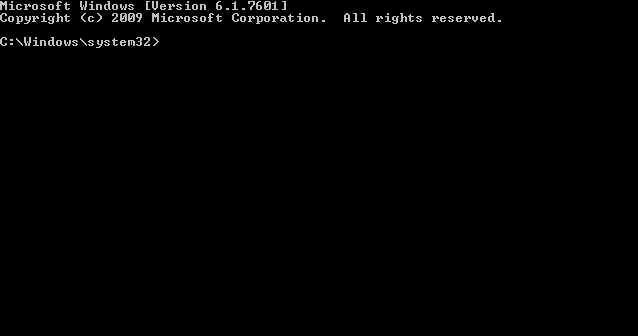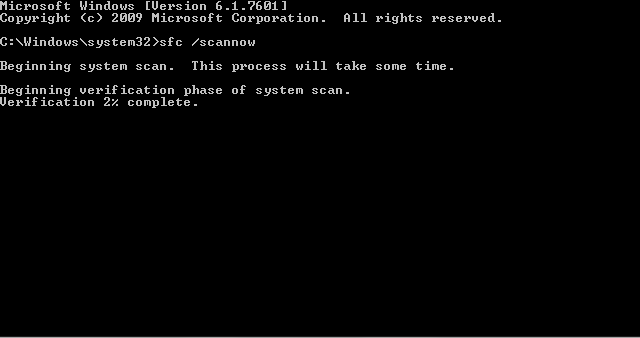| Snažíme se lokalizovat naše webové stránky v co největším počtu jazyků, jak je to možné, ale tato stránka je v současné době stroje přeloženy pomocí Google Translate. | zavřít |
-
-
produkty
-
prostředky
-
podpora
-
společnost
-
Použití sfc / scannow opravit systémové soubory systému WindowsUsing sfc /scannow to Fix Windows System Files
Podle Steve Horton Březen 21, 2013sfc /scannow, system files, Windows 7, windows 8, windows vista, Windows XP46 CommentsZa prvé, dovolte mi uvést rychlé vysvětlení, proč je používání sfc / scannow důležité a co to bude dělat s vaším počítačem.
Zatímco většina souborů na pevném disku nebo jednotce SSD jsou filmy, hudba a hry, je zde samostatné místo, kde jsou uloženy soubory, které obsahují váš operační systém. Tyto soubory jsou životně důležité pro funkce vašeho systému, a pokud řekněme, že se s nimi vyskytne virus, můžete se s nimi při práci s počítačem dostat vážných problémů.
Naštěstí může příkaz sfc / scannow tyto soubory chránit a obnovit. Je k dispozici v každé verzi systému Windows od Windows 2000 a zatímco 2000 a XP mohou vyžadovat, abyste měli k dispozici původní instalační disk, je to relativně bezbolestný proces na novějších počítačích.
Požadavky na sfc / scannow (a jak je splnit)
Nejdříve musíte mít přístup na správce počítače. Pokud používáte sdílený počítač – a nenastavil jste ho sami – pravděpodobně nemáte přístup administrátora. Chcete-li to získat, přimějte někoho, kdo je již správcem, aby vám poskytl administrátorská oprávnění – nebo, pokud byste dali přednost něco rychleji, požádejte je, aby vám pomohli. To znamená, že pokud váš účet není administrátor, budete muset dostat někoho, kdo vám umožní používat ve vašem počítači sfc / scannow. sfc / scannow lze otevřít mnoha různými způsoby, ale v tomto článku budeme diskutovat nejjednodušší způsob, jak jej provést.
Co se týče sfc / scannow
Každý soubor, který tvoří váš operační systém, bude naskenován pro zabezpečení a chyby a bude opraven, i když používáte starší verzi systému Windows, nebudete mít možnost opravit soubory, pokud nemáte původní instalační disk s vy. Pokud máte systémové téma – nebo jinou funkci -, které změnilo několik souborů ve vašem OS, vrátí se do původního stavu, což znamená, že téma nebo něco jiného, které bylo přidáno, bude odebráno.
instrukce sfc / scannow
Nejprve budete muset otevřít příkazový řádek .
Chcete-li otevřít příkazový řádek, stiskněte klávesu Start a zadejte CMD na vyhledávacím panelu a klepněte na první výsledek.
Pokud nejste správcem, klikněte pravým tlačítkem myši na něj, klikněte na možnost Spustit jako správce a přejděte administrátorovi, aby zadal své uživatelské jméno a heslo, aby vám umožnil provést změny.V systému Windows 8 stačí stisknout klávesu Windows Key + X a potom klepněte na položku Příkazový řádek (Admin).

Výsledné okno by mělo vypadat podobně.Po otevření příkazového řádku zadejte příkaz sfc / scannow do příkazového řádku a stiskněte klávesu Enter. Vložte disk Windows do mechaniky, pokud o to systém Windows požádá.
Po dokončení operace restartujte počítač. Windows by se nyní mělo chovat podobně jako normální.
sfc / scannow v práci.Was this post helpful?YesNoVolný, uvolnit Aktualizace ovladačů
Aktualizujte své ovladače za méně než 2 minuty, abyste si mohli užívat lépe výkon PC - Volný, uvolnit.
Volný, uvolnit Aktualizace ovladačů
Aktualizujte své ovladače za méně než 2 minuty, abyste si mohli užívat lépe
výkon PC - Volný, uvolnit.
Nenašli jste odpověď?Zeptejte se na naší komunity odborníků z celého světa a obdržet odpověď v žádném okamžiku vůbec.most relevant poslední články Připněte si to na Pinterest